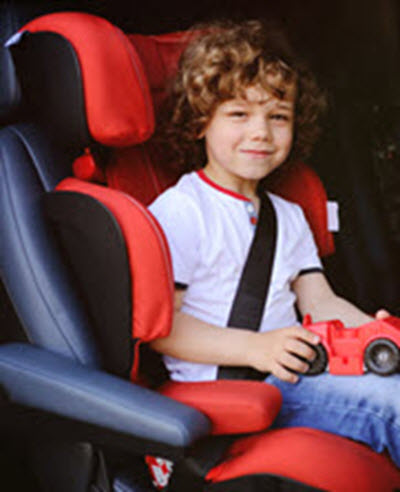Winter Car Seat & Child Passenger Safety

With driving conditions icy, and risks increased, it’s a good time for a refresher on child passenger safety, to ensure that even if an inclement weather collision occurs, your child is protected as much as possible.
Choosing the Right Car Seat
If you haven’t already purchased a car seat, the National Highway Traffic Safety Administration (NHTSA) publishes information on which car seats offer the safest restraints without affecting ease of use.
It’s important to check NHTSA guidelines to make sure that you select a car seat that is intended for your child’s age, height and weight. Additionally, it’s important to make sure that it faces the right direction. For instance, infants can ride in rear-facing car seats until they are 24 months old. It is safest for infants to ride in rear-facing car seats for as long as possible, so check to see what the maximum weight is for your selected make and model of rear-facing car seat. For most models, it will not exceed 30-35 pounds, at which point, a front-facing car seat becomes a safer option until the child reaches 40-45 pounds (again, confirm the exact weight range intended for your specific model). After your child transitions out of the front-facing car seat, a booster seat is the next step. Depending on the model, a child can use a booster seat until they are 60-100 pounds. The booster seat is designed to help the lap and shoulder belts fit on them correctly, as they would on an adult, because seat belts are not designed for children.
Installing the Car Seat
- Read the manufacturer’s instructions. There’s no one-size-fits-all when it comes to car seat installation. Even if you’ve successfully installed a car seat before, it’s important to check the specific manufacturer’s instructions for the make and model of the car seat that you are installing, to ensure that it will function as intended.
- The harness and chest straps should be snug. Make sure that the harness is right below the child’s armpits, and that only one finger can be slipped under the chest straps.
- Put it in the back seat. The back seat is the safest place for a car seat, because frontal collisions are the most common. All children under 12 years of age should ride in the backseat to avoid severe injuries that can be caused when the airbags are deployed in a crash.
Schedule a Consultation
If you or a loved one have been injured in a car accident that was not your fault, or if your child suffered an injury due to a faulty, malfunctioning, or inadequately labeled car seat, we are here to help. Our experienced Maryland personal injury lawyers will review the specific facts and circumstances of your case to determine the best path forward to get you the maximum amount of compensation and allow you to get back to focusing on life instead of on the law. Call the office of Berman | Sobin | Gross LLP today to schedule a free consultation.
Resource:
aahealth.org/child-passenger-safety-car-safety-seats/
